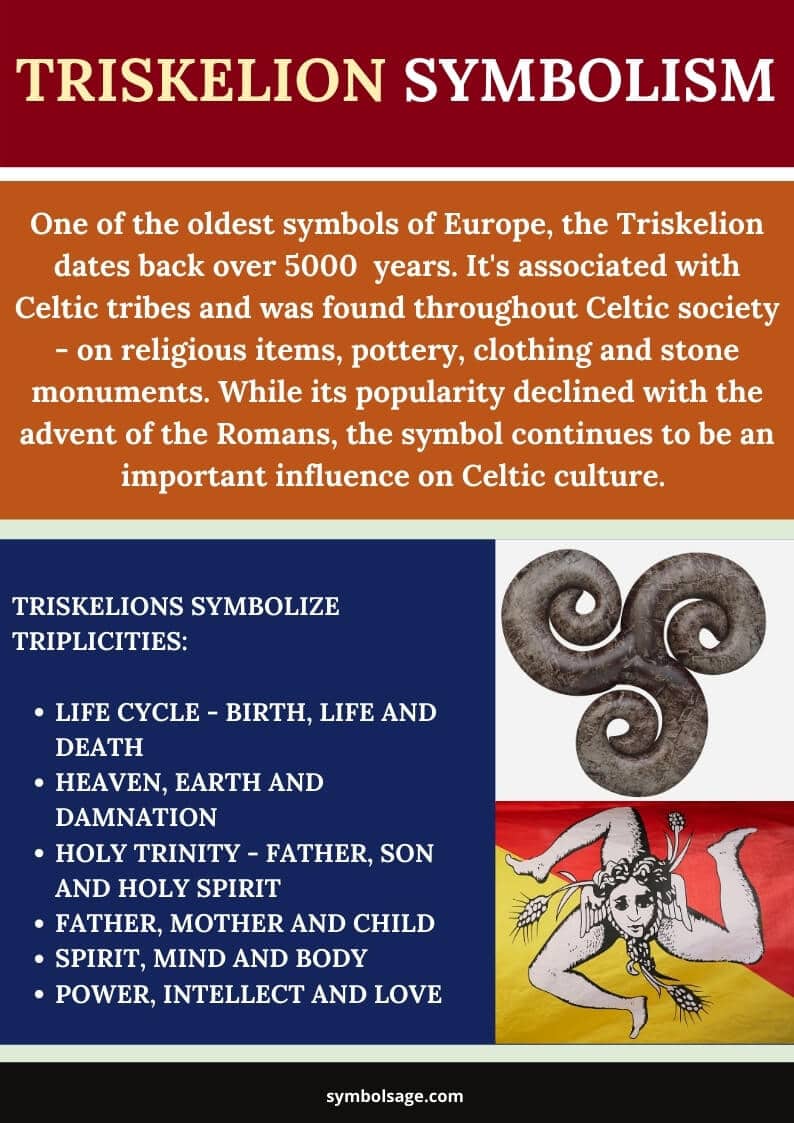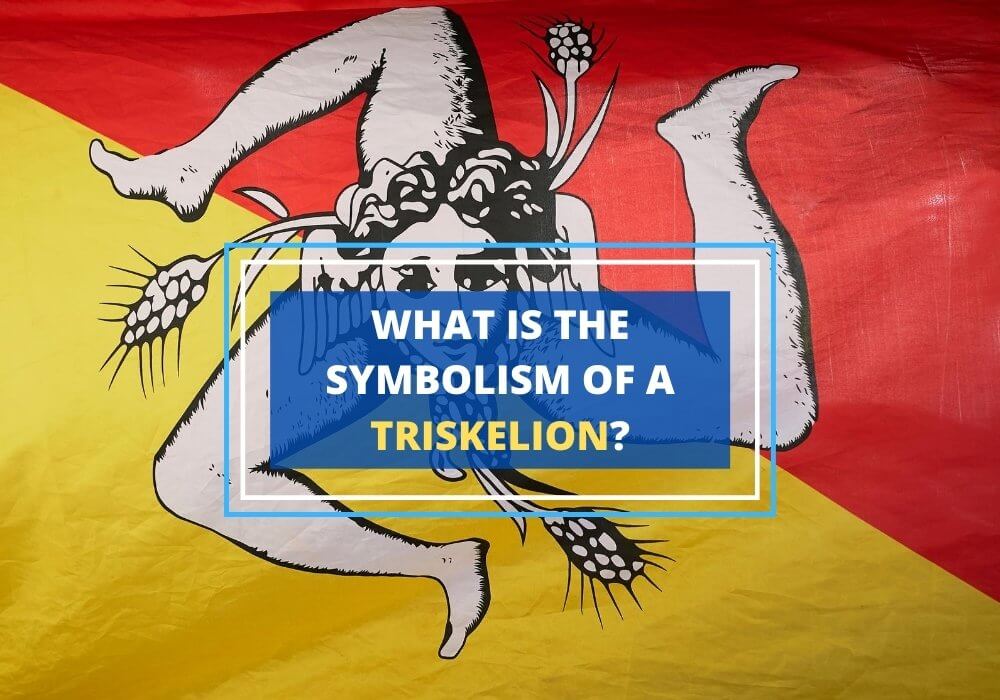
Table of Contents
The Triskelion, a symbol with a rich history spanning several millennia, has been an emblem of significance across various European cultures. While its earliest known representations can be traced back to the Bronze Age, the distinct form of the Triskelion as we recognize it today likely developed later.
This symbol, characterized by three interlocking spirals or three bent legs, has transcended its initial cultural boundaries to become a pan-European icon.
Triskelion History
As many of the primitive tribes of ancient Europe did not have a formal written language, they instead relied upon their mystic symbols to convey thousands of years of their culture, wisdom and spiritual meaning. One of the most powerful of these is the Triskelion symbols that dates back to as long ago as 5,000 years (or more), to the very dawn of civilization in Europe.
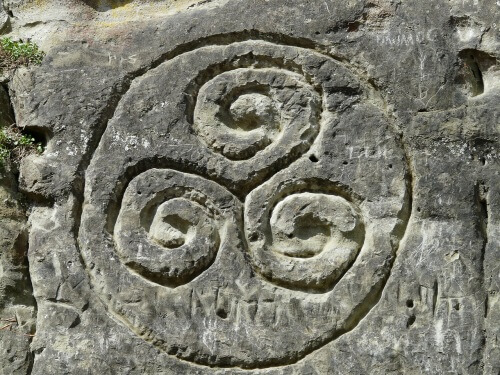
This particular style of symbols is most commonly associated with the Celtic tribes of central Europe and Britain, especially these loosely referred to as the Gaelic nations of Ireland, Wales and Scotland. It seemed to have been the most common and most important of their symbols, therefore it was found throughout Celtic society, appearing on many of their artifacts, such as on ceremonial gold cups, everyday pottery, clothing, coinage, weaponry, shields, religious items and carved into stone monuments.
With the coming of the Roman Empire around 2,000 years ago, the Celtic tribes would quickly be conquered and many of their ways would soon be lost forever. But by the late Medieval period the Triskelion still lingered on and had become a common feature in architectural design, especially in the European churches of the Gothic style that flourished throughout the region from the 13th to 16th century.
A stunning architectural example containing the Triskelion can be found at Avioth in northern France. There stands the religious monument the Recevresse, where passing pilgrims would leave offerings for the church.
In Victorian times the term Triskeles and Triskel were also used to describe this type of symbol, but these have now largely fallen into disuse. But because of their various vivid artistic images, the ancient Celtic culture still lingers on in the form of Celtic inspired jewelry, spiritual items and fashion.
Triskelion Design
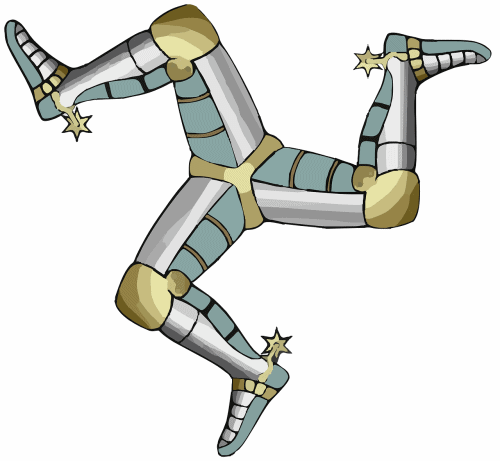
Traditionally Triskelion symbols consist of three similar interlocking or connecting spiral patterns of equal size. Although they can be quite intricate, generally they were straightforward and simple, often using the clever geometric design known as the Archimedean spiral.
Typically, at the centre of the Triskelion are three separate spirals connected together directly or joined through a triangle shape. However, on some of the more elaborate designs, there might be a deity or mythical creature of sorts, though these designs were relatively rare.
A variation on the traditional Triskelion design comprises of three bent legs rather than spirals. Though less common, it crops up throughout history and could be found as far back as the 3rd Century BC, being featured on the silver coins of the kingdom of Sicily. This version of the Triskelion is probably best known today as being the symbol on the modern-day flag of the British Isle of Man.
Another variation is the Triquetra (also known as the Trinity Knot), which is a continuous interlocked knot that gives the impression of being three separate entities joined together. It is particularly popular with modern day pagans.
Triskelion Symbolism
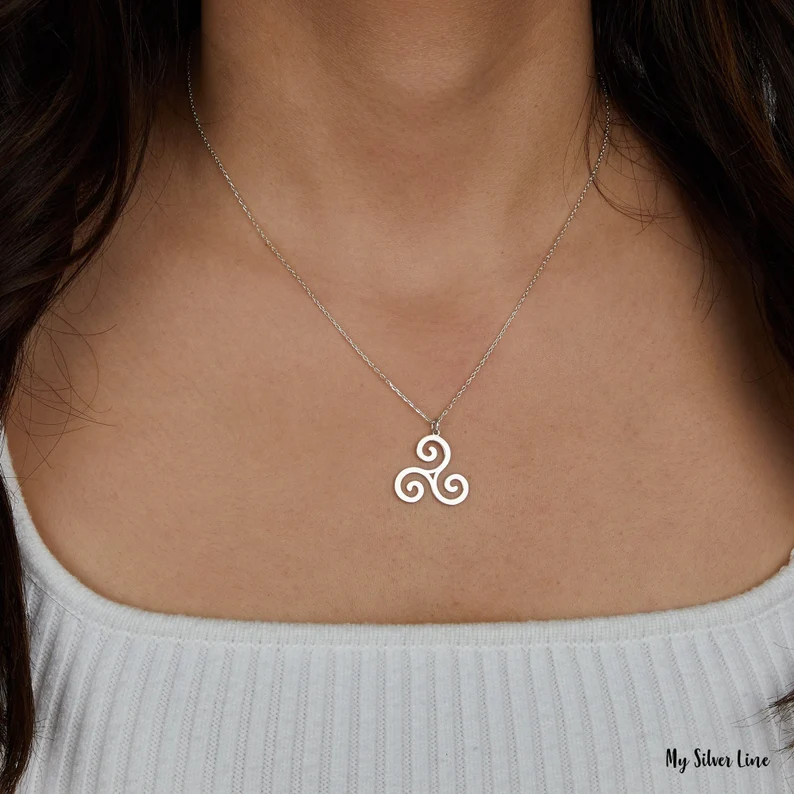
The word Triskelion itself is derived from the old Greek term for ‘Three-times’. Triskelion symbolizes the importance that the Celtic culture placed on the number three.
The symbol could represent a series of cycles that all consisted of three stages or events, like the three phases of human existence:
- Birth (the very beginning)
- Life itself (the journey)
- Death (the ending)
But sometimes a much deeper spiritual meaning was attached to the Triskelion, being seen as representing:
- The Heavens (the spirit world above),
- The Earth (the everyday existence of the soul)
- Damnation (the dark demonic underworld far beneath us)
The Triskelion symbol emphasized that all these realms were equally important and needed to be equally respected.
Another important interpretation of the meaning of the Triskelion, was that it represents the elements of earth, water and the sky.
In recent times (since the late Middle Ages), it has also become widely associated with the Christian faith, being used to represent the Holy Trinity, that being:
- The Father (God)
- The Son (Jesus Christ)
- The Holy Spirit (or Holy Ghost).
Some other triplicities that are ascribed to the Triskelion include:
- Father, mother and child
- Power, intellect and love
- Creation, preservation and destruction
- Spirit, mind and body
Triskelion Uses Today
The straightforward and symmetrical design of the Triskelion lends itself well to jewelry, being simple but eye-catching. Celtic inspired pendants, earrings, charms and brooches incorporating the Triskelion are especially popular these days, as well as being a highly fashionable tattoo design. Because there are many stylistic versions to the Triskelion, it can be incorporated in numerous ways into fashion and jewelry.
The symbol also appears in a number of places across the world on things like flags, government departments emblems, military awards and units.
There is even a Triskelion Grand Fraternity that was set-up in 1968 (a year later a Sorority version was founded), who both use it as their symbol. Each is highly influential and are based in the various campuses of the University of the Philippines.
In Brief
The Triskelion is an ancient symbol that is a timeless classic. It is simple in form, yet emphasizes that life has a natural order and balance that are interconnected in a synergy of various sets of three different elements. It’s highly meaningful and continues to be widely used and respected.
